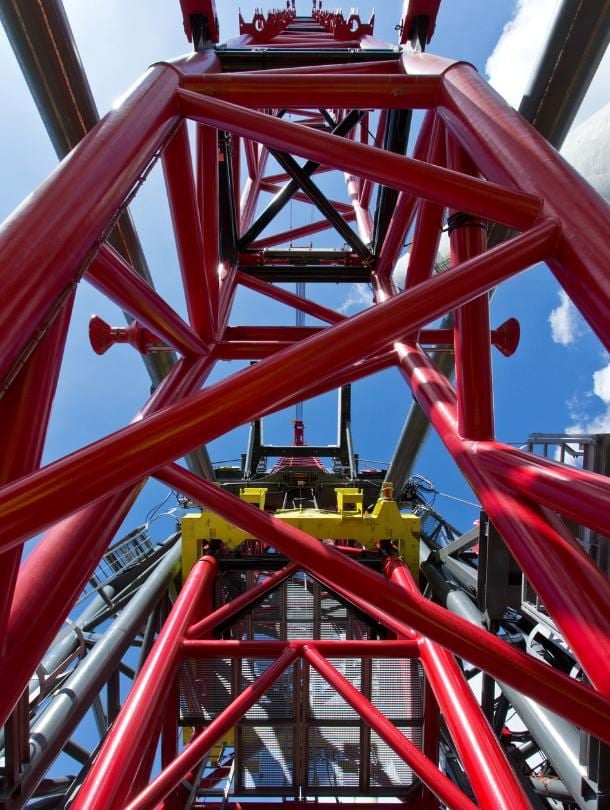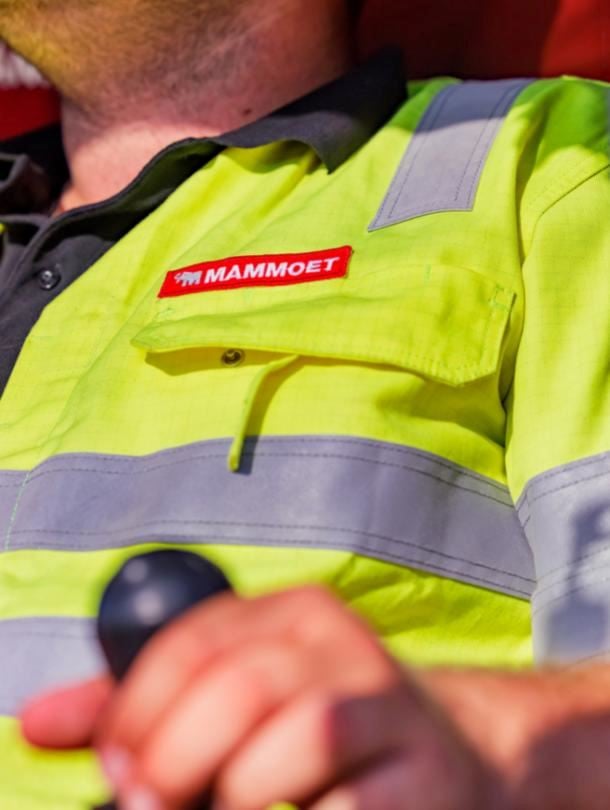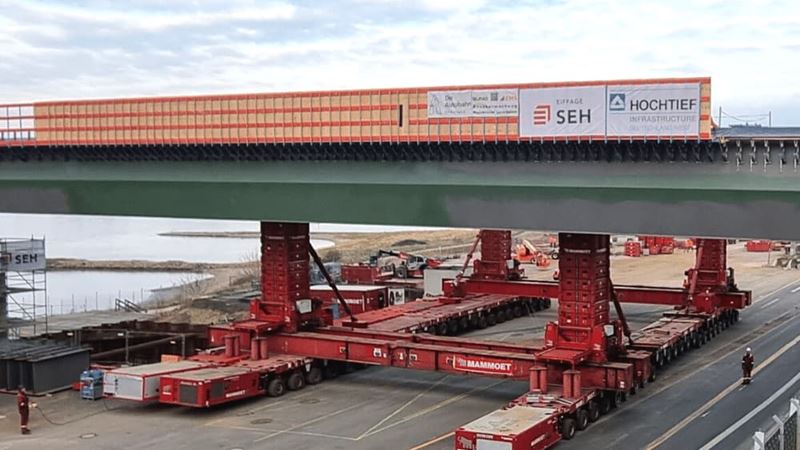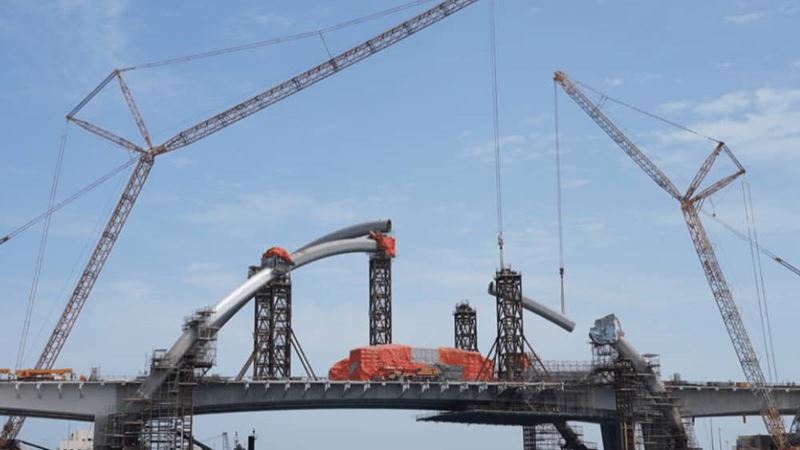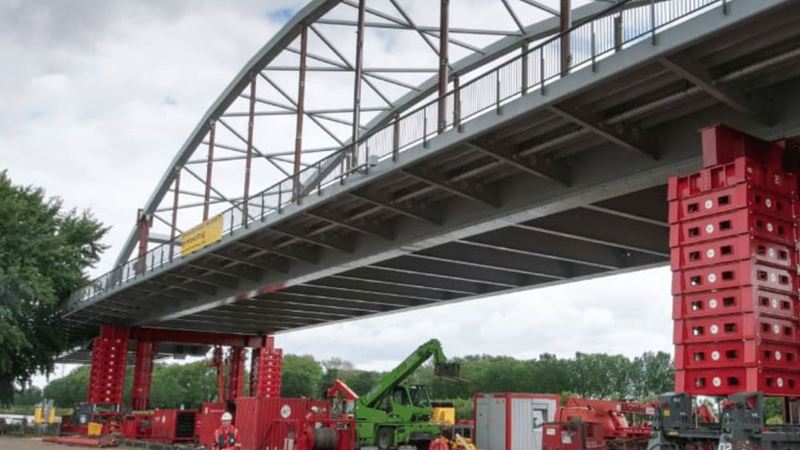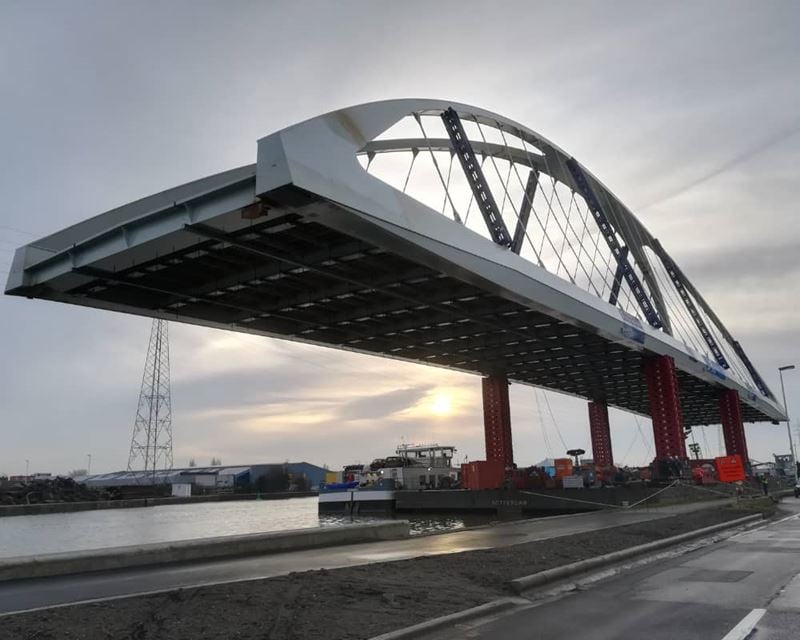
Sector:
Civil Engineering
Expertise:
Load-in & load-out
Marine transport
Jacking
Benefits:
Reduced preparation
Reduced disruption
Location:
Belgium
Mammoet successfully demonstrated its multi-service capabilities when performing the load-out and installation of the arc bridge, weighing 1,200t, using the Mega Jack 800 in Antwerp, Belgium, for De Vlaamse Waterweg.
Mammoet had only one weekend to complete the operations; this was only possible by using the Mega Jack 800 as operation time is reduced.
In order to complete the different techniques and operations, Mammoet ensured logistics were optimized to work with the limited room available on the barge. The bridge deck and arches were transferred from the construction supports onto 40 axle lines of SPMT with 4 PPUs in a configuration of 4 x 4 file 4/6 row.
Mammoet then loaded out the bridge deck, longitudinally from the fabrication site at Gent. The bridge was then transported 75km with the SPMTs by barge to Antwerp on the Scheldt River. In order to pass under the low bridges on the route, the arches of the bridge were positioned in pieces on top of the bridge deck at a restricted height.
Once in Antwerp, the bridge was loaded transversally at the site near the final location. Here, the arches were fully assembled over three months, and then the entire bridge structure was jacked up using four 500t climbing jacks and loaded out using 28 axle lines of SPMT in a configuration of 2 x 4 file 14. It was transported by barge 2.5km under high voltage lines to the final installation site.
The bridge was then installed into its final position. To position the bridge higher than the abutments, the bridge was jacked up 8m using Mammoet’s Mega Jack 800 and strand lashing was installed to protect the bridge against the wind and float-in forces.
The Mega Jack 800 is one of the most stable jacking solutions on the market, making it the ideal solution that also increased safety. Mammoet used tugboats to float-in the bridge into its position, the bridge was then lowered by 3m in between the abutments, with a clearance of 160mm. The bridge was then set down onto the temporary bearings.
